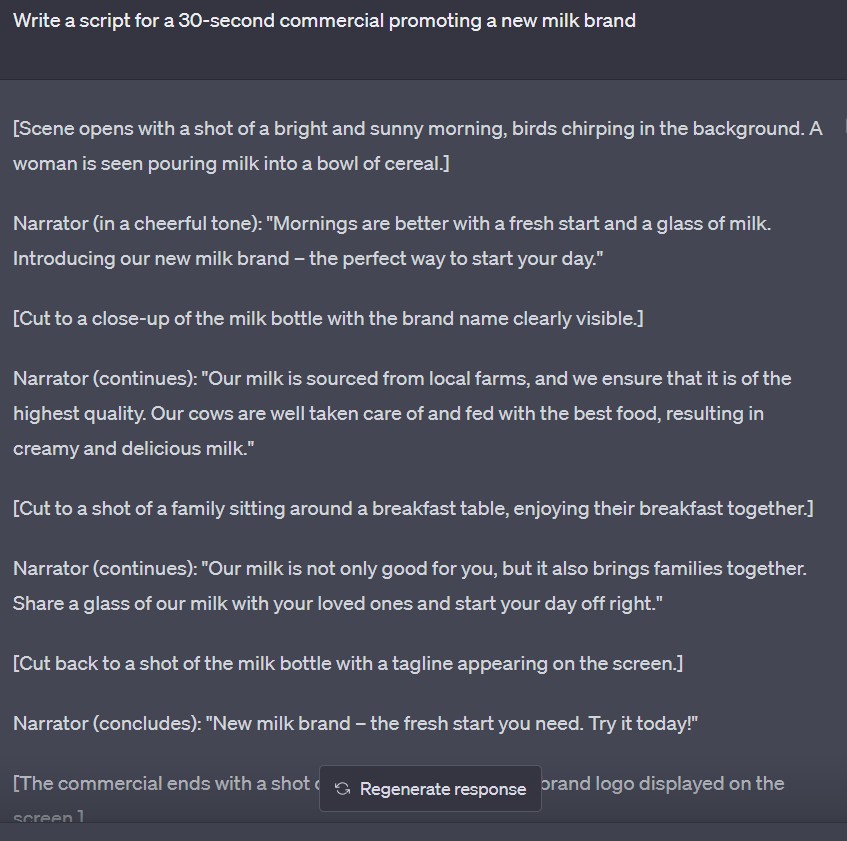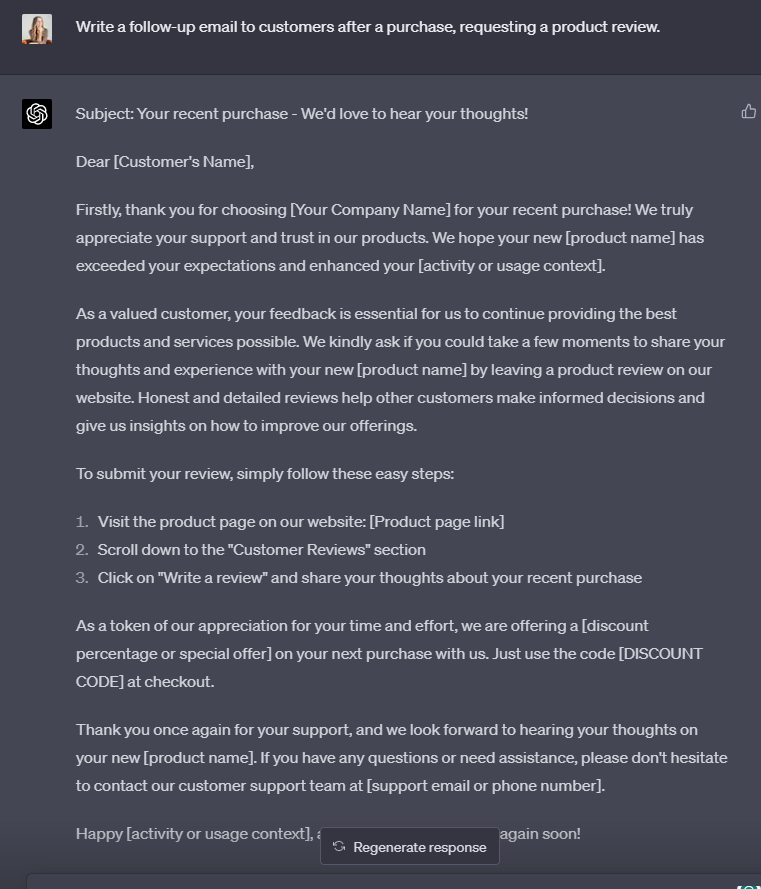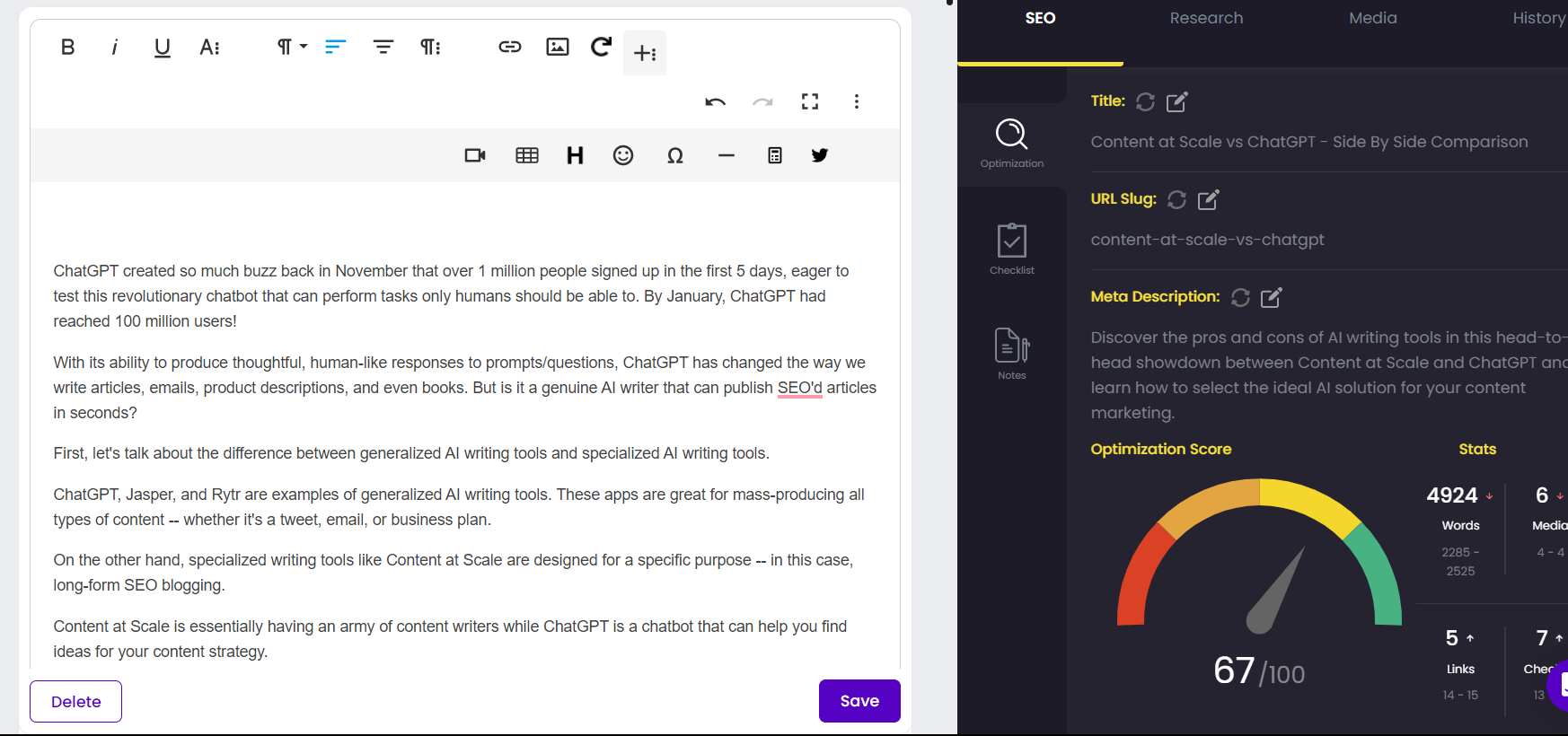ChatGPT became an instant Internet sensation when it came out in November 2022. In just five days, ChatGPT reached 1 million users — with tech giant Microsoft extending its partnership with Open AI to further increase the capabilities of ChatGPT.
Meanwhile, Bard is Google’s response to ChatGPT.
So what’s the difference between Bard vs ChatGPT?
Both are conversational AI chatbots that provide informative responses to questions/prompts from users. These responses are so well-written that people started finding ways to use AI-generated content for business (marketing), educational, and personal purposes.
As of this writing, Google Bard is only available to select Google account holders who have previously signed up for the waitlist.
Both Google Bard and ChatGPT can generate complex answers to detailed questions/prompts with ease. However, their different training methods mean each will approach questions differently.
Bard is trained on Infiniset, which is a data set that includes Common Crawl, Wikipedia, news articles, and web documents to enhance its dialogue capabilities. It also has access to the internet in real time — a feature that ChatGPT lacks as it was trained using a pre-defined set of data up to 2021.
This blog post will feature an in-depth comparison of Google Bard vs ChatGPT 4 and how each platform can serve your specific marketing needs.
By examining the similarities and differences between these two platforms, you’ll be better equipped to make an informed decision when choosing between Bard and ChatGPT.
Table of Contents:
- What is Google Bard?
- What is ChatGPT?
- Google Bard vs ChatGPT
- LaMDA Training vs. OpenAI’s Engine
- Writing Content
- Brainstorming
- In-Depth Research
- Answer Everyday Questions
- Data Collection Concerns
- How to Use Chatbots for Content Marketing
- The Future of Language Models in the Age of AI
- Conclusion
What is Google Bard?
Google Bard is a cutting-edge AI chat platform that functions similarly to ChatGPT. With its advanced natural language processing capabilities, Bard can also be used to generate a wide range of content types that cater to various industries and niches — again, similar to how marketers and businesses are using ChatGPT now.
However, the main difference between Bard vs ChatGPT 4 is that Bard can pull data from the live web. (As we all know, ChatGPT relies on limited knowledge that’s only current up to January 2022 for GPT 3.5 and April 2023 for GPT-4.)

Screenshot from ChatGPT-4
Bard uses cutting-edge artificial intelligence technology to understand the context and requirements of your prompts before generating unique text based on the provided inputs.
Features of Google Bard
- Google integration: Bard’s technology is designed to seamlessly integrate with the Google ecosystem, providing users with access to a wealth of information from various Google products such as Google Search and Scholar. By tapping into these resources, Bard can deliver real-time and current information to its users. Additionally, this integration enables a personalized experience by utilizing the user’s search history and preferences to better understand their needs and interests.
- Sentiment analysis: Bard has a remarkable function that enables it to assess the sentiment expressed in text. This feature helps you measure public opinion and keep track of your brand’s reputation, enabling you to generate tailored emotional reactions.
- Real-time language translation: Google Bard is equipped with advanced NLP features that allow it to provide instantaneous language translation. This makes it an indispensable tool for individuals who communicate in multiple languages, as it removes any language barriers and facilitates better global collaboration.
- Voice-based interaction: Google Bard offers more than just text-based communication. It also has voice-based interaction, which makes it an efficient virtual assistant for a variety of tasks. Users can use their voice to give commands and access information, search the web, set up appointments, and much more. This feature is especially useful for people who are busy or have accessibility needs as they can operate Google Bard hands-free.
Bard is a comprehensive tool for content marketing that enables users to craft, control, enhance, and analyze their campaigns. With its vast array of features and benefits, Bard can help businesses achieve success in their digital marketing efforts.
Now let’s take a look at ChatGPT – the hottest trend today in content marketing automation.
What is ChatGPT?
ChatGPT, or Generative Pre-trained Transformer (GPT), is an advanced language model developed by OpenAI. It uses machine learning algorithms to understand and generate human-like text based on the input you provide.
ChatGPT leverages deep learning techniques to analyze vast amounts of textual data from various sources like books, articles, and websites. By doing so, it can generate contextually relevant responses in a conversational manner.
This powerful AI tool has been widely adopted across industries for tasks such as content generation, translation services, summarization, chatbot development, and more.
Features of ChatGPT
- Natural language processing: The versatility of ChatGPT makes it suitable for a wide range of applications that require natural language processing capabilities. With its ability to comprehend complex sentences and contextual information, ChatGPT can both interpret user input accurately and provide accurate answers in real-time.
- Multilingual support: ChatGPT can understand and respond to customer queries in multiple languages, making it an invaluable asset for any business looking to reach out to global audiences. The app currently supports English, Spanish, French, German, Italian, Dutch, Portuguese, Japanese, Korean, Chinese, Arabic, and Russian.
- Detect sentiment from conversations: By analyzing how people are talking about your brand or product, you can gain valuable insights into what they think about it – which could help you improve your services or products.
Overall, ChatGPT is a powerful tool that can help you create short-form content like tweets, snippets, and email newsletters with less time and effort.
Comparing ChatGPT vs Bard, let’s see how they measure up against each other.
Google Bard vs ChatGPT 4
How are Google Bard vs ChatGPT 4 similar? And how are they different? Let’s take a look.
Similarities Between Bard vs ChatGPT 4
- Natural language processing: Both Bard and ChatGPT utilize advanced natural language processing (NLP) algorithms to generate human-like text based on user input.
- User interface: Each platform offers a user-friendly interface that allows users to quickly ask questions, input prompts, and generate written content with minimal effort.
- Versatility: Both tools are capable of generating various types of content such as social media updates, product descriptions, or even creative pieces like songs and poems.
- Frequent updates: The developers behind both platforms continually update their respective AI models to improve performance and deliver better results for users over time.
Differences Between Bard vs ChatGPT 4
- Engine: Google Bard uses LaMDA, a language model developed by Google itself, while ChatGPT uses its own GPT-3.5 model. While both models are designed for conversational purposes, ChatGPT is limited to data collected before 2022 in its current GPT-3 version, whereas Google Bard incorporates more recent data into its language processing capabilities.
- Availability: ChatGPT offers free access to everyone, which made it such a big hit. For those who want more advanced features, ChatGPT Plus is available for a monthly fee of $20. This upgraded version includes the option to use GPT-4 and ChatGPT plugins. Additionally, Microsoft has integrated GPT-4 into Bing Chat for users with access to ChatGPT Plus. On the other hand, Google Bard has been slow to roll out and is only available to select users in the US and the UK. Those who are interested may sign up for a waitlist. If you’re already a member of Google One or Pixel Superfan group, you’ll be granted automatic access.
- Integration: Microsoft has added ChatGPT to its Bing search engine. The chatbot is also available in Teams, Edge, and other Microsoft Office applications. In the future, ChatGPT will be introducing more applications through its API and ChatGPT plugins. Meanwhile, Google Bard is currently a standalone tool although it may be integrated into Google Search in the future. It is possible that we will see Bard in the Chrome browser and will be available to third-party developers at some point.

LaMDA Training vs. OpenAI’s Engine
If you’ve been keeping up with AI language models, you’re likely familiar with Google’s LaMDA and OpenAI’s GPT-3 engine.
LaMDA focuses on understanding the intent behind each word, making it a pro at grasping nuanced inquiries.
OpenAI, on the other hand, leans towards natural language orientation, generating more coherent and contextually relevant responses.
These differences in approach lead to variations in their outputs.
A simple question like “What’s the weather like?” may get similar answers, but ask something complex or abstract, and the differences start to show.
LaMDA can understand questions even when they’re not traditionally phrased, making it ideal for unpredictable or unstructured user inputs.
With LaMDA, you could say “Is there rain in my day?” and still get an accurate response about today’s forecast.
GPT-3 by OpenAI excels at maintaining coherence over long conversations because of its emphasis on natural language orientation.
So, if you’re discussing climate change effects one moment and renewable energy solutions the next, GPT-3 will smoothly transition with you.
Note: It’s not about one model being superior to the other; they shine differently depending on the use case.
Now let’s compare how both language models perform in specific applications.
Writing Content
When it comes to writing capabilities, Google Bard and ChatGPT are two different animals.
Bard has a talent for summarizing complex content like the Harry Potter series, making it perfect for quick reviews or recaps.
On the other hand, while ChatGPT may not shine in the same areas as Bard, it has its own strengths.
How does Bard excel in content creation?
The answer is simple: It’s all about structure and understanding context.
Bard utilizes Google’s Pathways Language Model to generate coherent summaries of long articles or books.
Logical Inconsistencies
No AI language model is flawless — and that includes Bard.
Sometimes, this otherwise impressive tool can stumble upon logical inconsistencies when dealing with intricate narratives or complex arguments.
If you’re looking for a summary of your favorite book series or need help condensing news articles into bite-sized pieces, then give Google’s Bard a try.
If you want something more versatile that can handle various tasks beyond just summarization (like brainstorming ideas), then consider using ChatGPT from OpenAI.
Brainstorming
When it comes to brainstorming blog ideas, especially for niche topics like food and travel blogs, AI language models can be a game-changer.
In this arena, ChatGPT has proven its mettle.
The model is great at providing awesome article title suggestions that are not only engaging but also SEO-friendly.
To give you an idea, let’s look at some examples. Here, I asked it to “write 5 titles for a travel or food blog post.”

It came up with a few gems, including “Indulge in a Taste of Tradition: Exploring Authentic Italian Recipes from the Heart of Tuscany” and “A Culinary Journey through the Streets of Paris: Exploring the Delights of French Cuisine.”
Sounds intriguing, right? That’s because ChatGPT understands your topic and generates titles that are likely to attract readers’ attention.
Beyond just generating catchy titles, it can even help with content creation. Here, I asked it to “Write a script for a 30-second commercial promoting a new milk brand.”

Pretty impressive.
If you’re struggling with writer’s block or need fresh perspectives on a topic, consider leveraging the power of AI like ChatGPT.
This tool could very well become your secret weapon for consistently churning out high-quality content.
In-Depth Research
No need to search any further if you’re in the market for a top-notch research tool — Google Bard is your answer.
This AI language model doesn’t just spit out random information; it provides trustworthy links along with easy-to-understand explanations of each discovery.
Google’s Pathways Language Model, which powers Bard, is a genius at summarizing complex documents efficiently.
Bard can take an intricate scientific paper or lengthy legal document and condense it into bite-sized nuggets without losing the essence of the content.
No more sifting through endless pages to find the good stuff — let Bard do the heavy lifting.
Bard’s ability to generate questions based on user queries is a unique and powerful feature that not only improves understanding but also encourages users to think more deeply about their findings.
This not only enhances comprehension but also encourages deeper exploration of topics by prompting users to think critically about what they’ve learned.
Answer Everyday Questions
When it comes to Q&A, Google Bard and ChatGPT are both powerhouses in their own right.
Bard has its strengths, but the GPT-4 version of ChatGPT has taken things up a notch.
Its ability to delve deeper into topics is exciting. For instance, if you need financial planning advice, ChatGPT-4 can provide that for you.
ChatGPT’s natural-sounding text stands out as one of its most impressive features. It’s like talking to a specialist who can easily break down complicated ideas.
This makes it not just useful for businesses or professionals seeking AI assistance but also for everyday users who want information on various subjects without jargon overload.
In comparison, Bard sometimes falls short when producing texts that sound human-like. While it does well in certain areas such as summarizing news articles or books, there’s room for improvement in other areas.
Data Collection Concerns
AI language models like Google Bard and ChatGPT are impressive, but there’s a catch: data collection.
These tools collect personal data during interactions, which could be misused.
This concern isn’t limited to just these two; it’s a common worry with all AI technologies.
The collected information might include anything you input, from your name to sensitive personal details.
For example, if you’re using one of these tools to brainstorm blog ideas about your recent trip to Italy, that info gets stored in their databases.
This raises privacy and security questions.
Who can access this data? How long is it kept?
Always read the privacy policies before using such services. Bard’s privacy policy can be found on Google’s website, and OpenAI provides its own for ChatGPT.
Despite being free or low-cost solutions for various tasks, users should stay cautious.
If privacy is of utmost concern to your business, you’ll be glad to know that Content at Scale will never share your information with the world! Whether you’re using its AI content writer to create long-form blog posts, or firing up its AIMEE chatbot to create other types of content, you can rest assured that any information you input is safe from prying eyes.
How to Use Chatbots for Content Marketing
A chatbot like ChatGPT or Bard can serve various purposes for a content marketer, such as brainstorming content ideas or writing marketing emails.
Chatbots like ChatGPT and Bard are great for writing short-form content like product descriptions, social media captions, email newsletters, and FAQs. If you’re running out of ideas for your blog, these chatbots can also help you generate new topics within your niche.
Here’s an example of a follow-up email that ChatGPT wrote:

What about long-form content?
Unfortunately, chatbots are not that great for long-form content. ChatGPT tends to ignore word count, so even if you explicitly say you want a 2,000-word article, it will only come up with around 600 words.
If your editorial calendar includes informational articles, case studies, white papers, and definitive guides, then you need a specialized AI tool to accomplish these writing tasks.
One such tool is Content at Scale. Designed specifically for long-form SEO writing, Content at Scale can generate a well-written, fully optimized, 3,000-word article for you within minutes. All you have to do is type in one long-tail keyword — no detailed prompts required!
(Learn more about the differences between Content at Scale and ChatGPT in our guide.)

The Future of Language Models in the Age of AI
The future of AI technology is mind-blowing, especially when we consider models like Google Bard vs ChatGPT 4.
Bard’s translation skills are off the charts. It can transform complicated documents into comprehensible language, making it a critical asset for worldwide enterprises.
Meanwhile, ChatGPT is like a human text-producing machine, showing great promise in content creation and customer service automation.
But hey, these models aren’t perfect. Sometimes they produce logical inconsistencies or fail to fully grasp the user’s intent.
Don’t worry, though. Despite their flaws, both models have a wide range of applications that keep expanding as improvements are made.
For example, Google’s Pathways Language Model used by Bard has been refined to summarize news articles or generate ideas for blog posts — outperforming many other AI tools on the market.
In contrast, OpenAI’s GPT-4 model excels at providing step-by-step instructions for platforms like Google Sheets — leaving Bard in the dust.
These capabilities are just the beginning of what these technologies can achieve. As machine learning algorithms advance and computational power increases, brace yourself for even more mind-blowing developments from Google Bard and OpenAI’s ChatGPT.
Conclusion
After comparing Google Bard vs ChatGPT 4, it’s clear that both platforms offer unique features and benefits for content creation. Bard’s limited availability makes it difficult to assess its performance whereas millions of users are already taking advantage of ChatGPT’s AI-powered solution to answer questions, brainstorm content ideas, and write short-form content.
If you’re looking to automate your entire content marketing process, you don’t need ChatGPT or Bard. Content at Scale can help you put your whole marketing campaign on autopilot! Research keywords, generate blog outlines, and write ad copy, drip emails, social media posts, and long-form blog content with just one app! Best of all, Content at Scale has been trained to focus on SEO so you know that your content will reach the right audience. Try it today.